In one of our previous videos, we complained that Hustler Casino Live, despite the great success of this show, is moving in the wrong direction by deliberately not inviting decent players. Well, we should give them credit, as in the next episode, one of the strongest players in the world, Mikita Badziakouski, known online under the nickname fish2013, made an appearance.
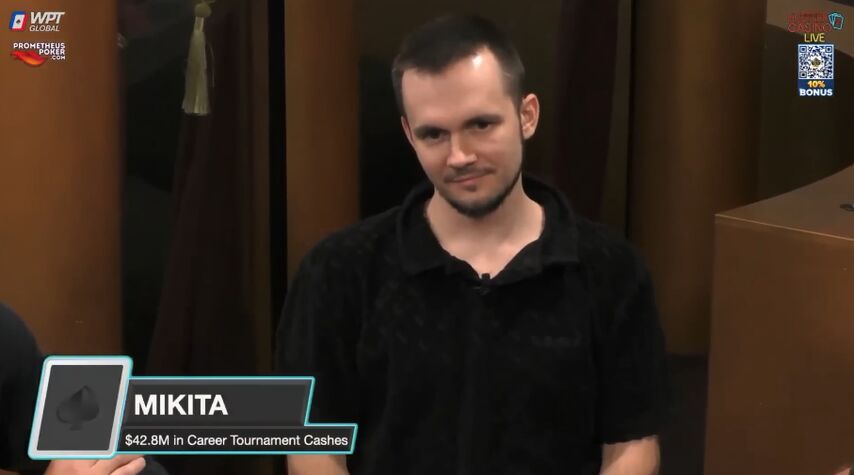
Today we will analyze the hand played by Mikita and the popular poker video blogger Mariano.
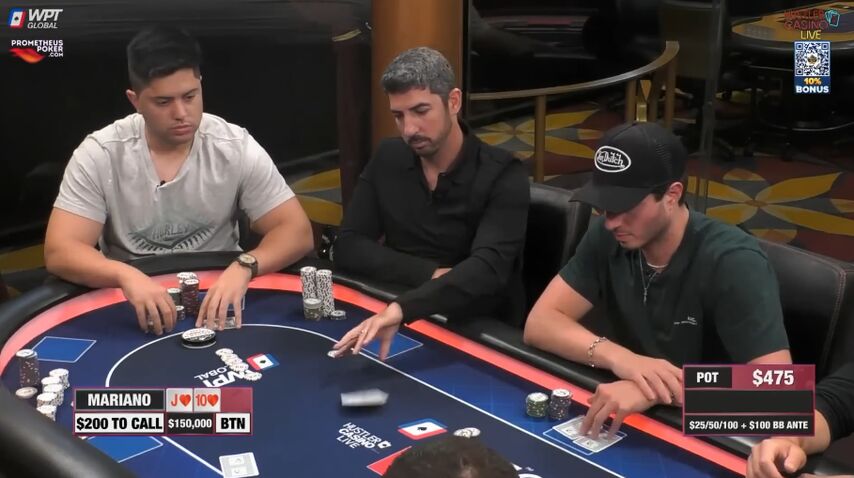 Mariano opens the button with a $500 raise
Mariano opens the button with a $500 raise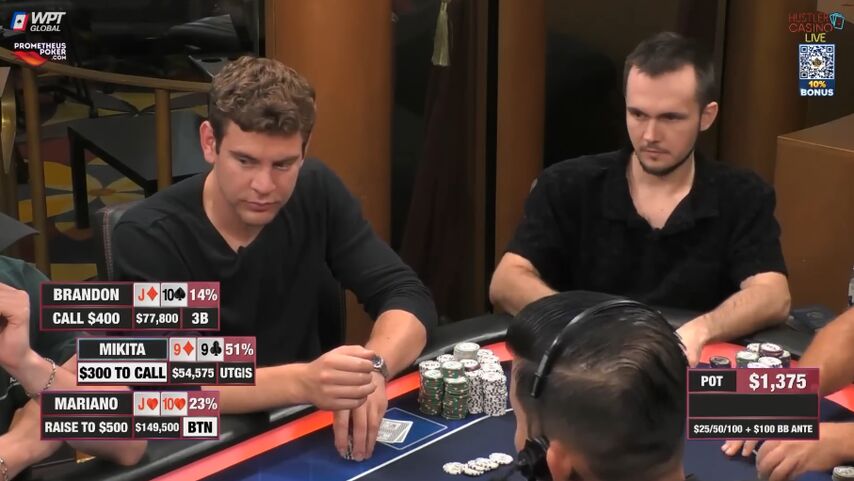 After a call from a BB player, Mikita squeezes $3,000 on the straddle
After a call from a BB player, Mikita squeezes $3,000 on the straddle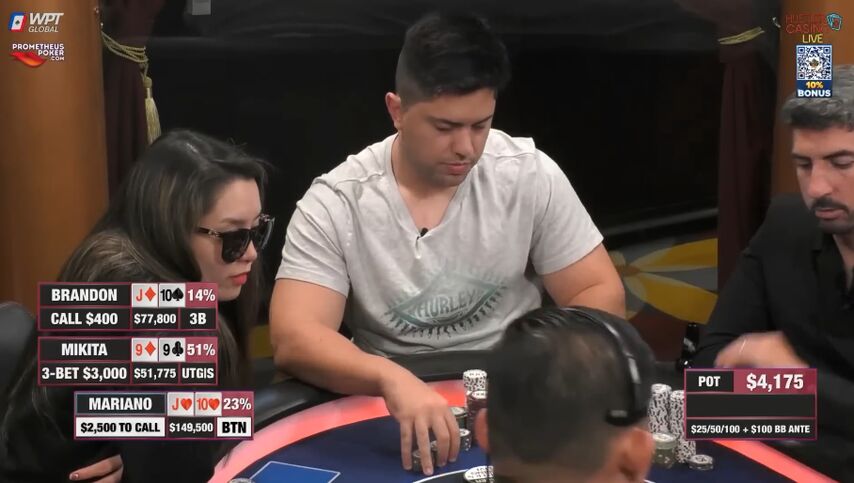 Mariano calls
Mariano calls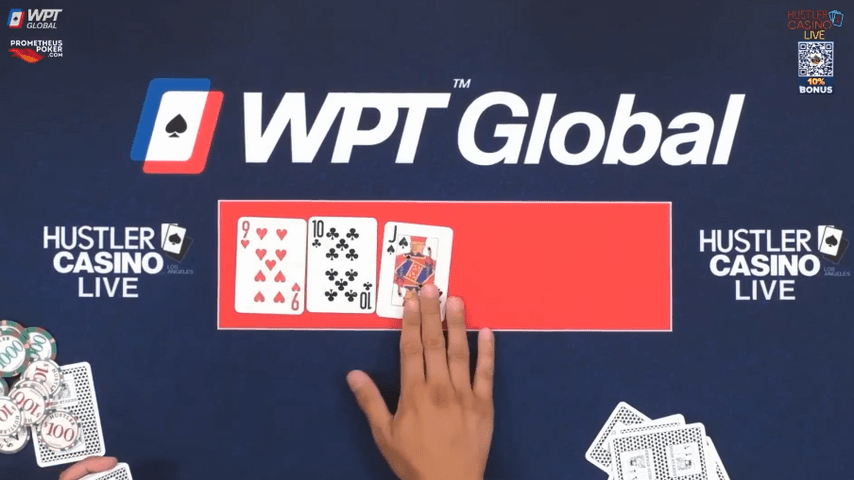
Mikita flops a set and decides to check. This is probably because the range Mariano raises and calls the squeeze with hits this board perfectly with numerous straights, sets, and two pair. Mikita, of course, has an advantage against overpairs, but on such a dynamic board, their strength drops noticeably.
In favor of slowplaying the strongest hands is the fact that Mariano's range on this flop becomes quite polar, which increases the likelihood of his attack in response to a check.
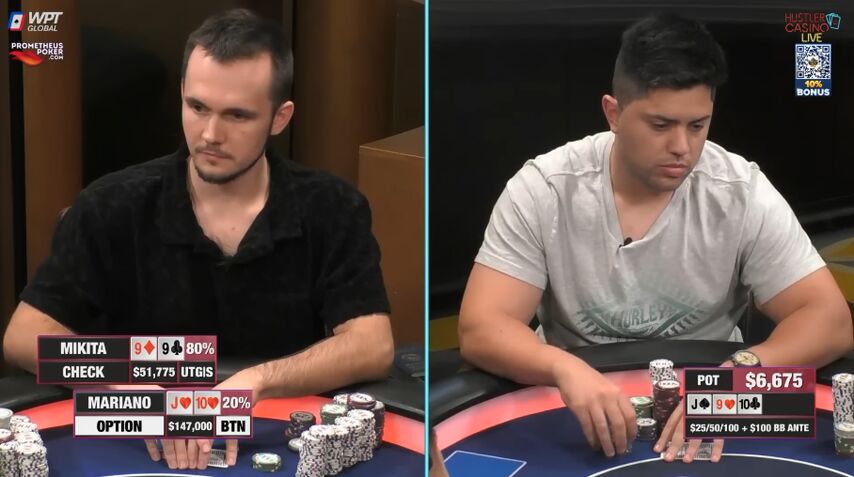
Mariano, however, checks next. The solver approves of his decision.
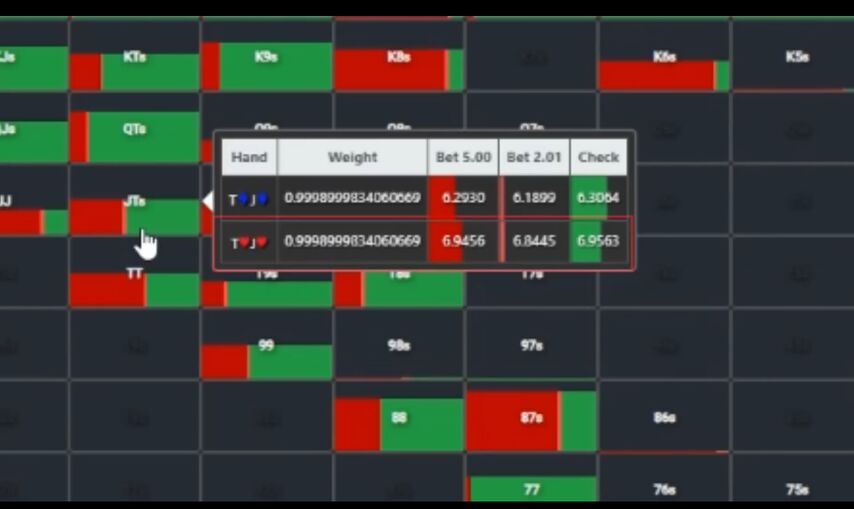
Since Mariano's range is polar on this flop, as we said, the player should bet big with his strongest and weakest hands and check medium strength hands. Even though he has two top pair, JTs are roughly on the line between betting and checking in equity, leaning towards checking especially when Villain is capable of slowplaying.
The turn is an ace and Nikita checks again.
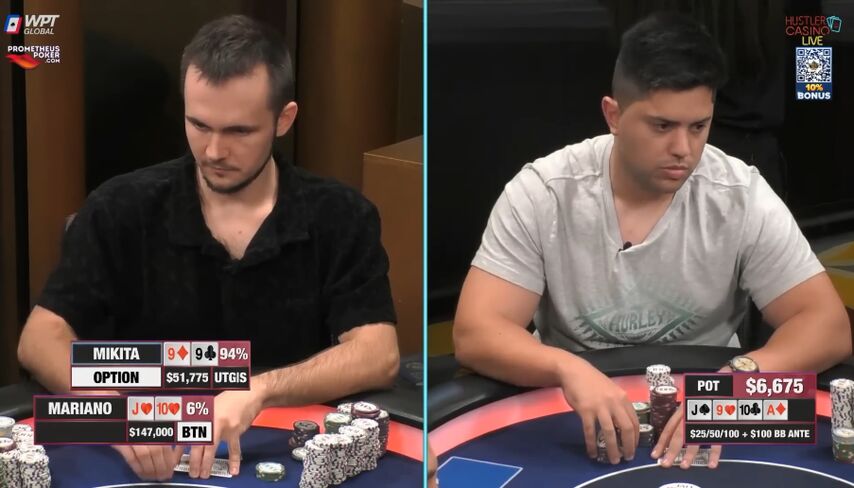
According to the solver, the turn should be played more aggressively than we played on the flop:
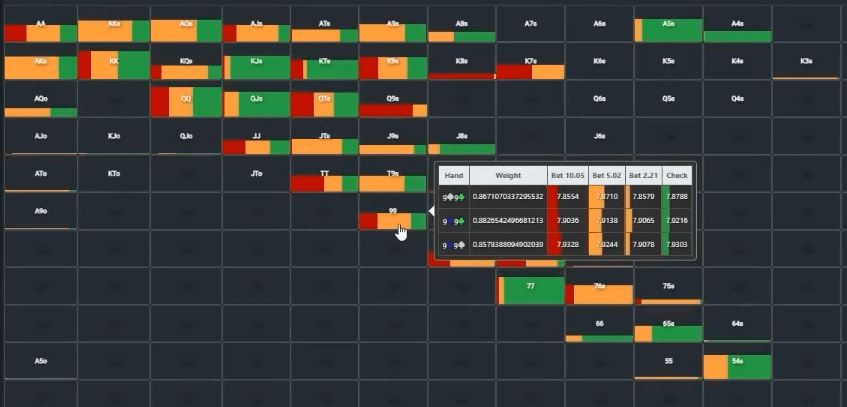
There are two reasons for this. First, Mariano's polarized range on the flop lost many of his strongest and weakest hands after the check and became narrower and tighter. Simply put, he has no reason to bluff and no reason to draw. Secondly, the ace is a good card for Nikita's range, giving him sets and several combinations of two high pairs.
However, his ace lead isn't big enough to allow for a very wide range of delayed c-bets. A good portion of Mikita's hands are still interested in checking, and to protect, you need to sometimes slow-play monsters, so all sets, including a set of nines, check with some frequency.
Mariano checks next, and this is the most common solve line with his hand:
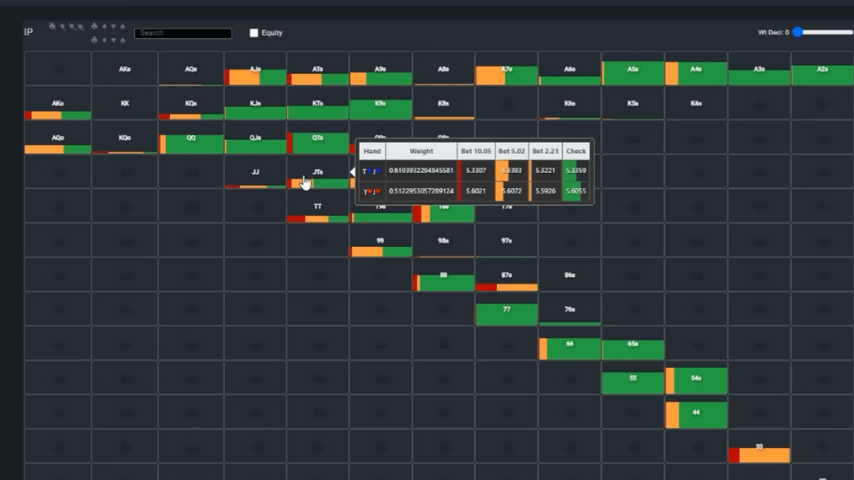
Assuming Mikita's double-checking range is balanced and contains enough slowplays, Mariano's two pair should still be cautious. And while a bet is not a mistake, a check is fine too.
The river hits a deuce.
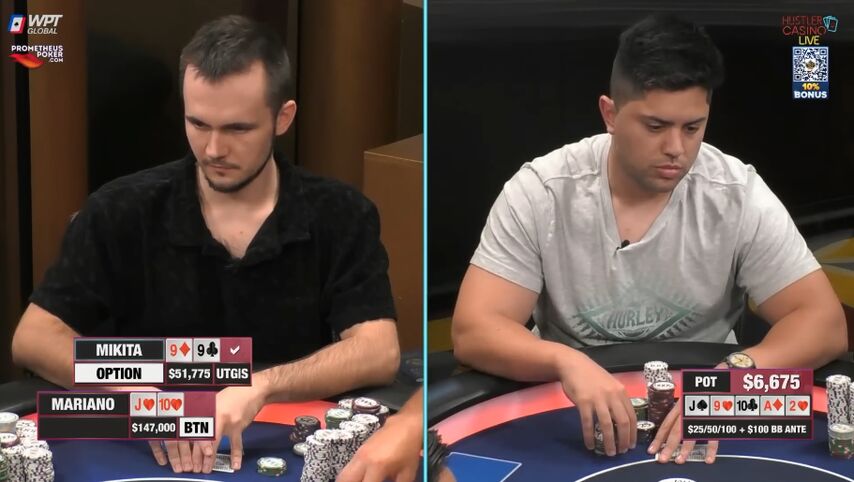
The river is an absolute blank. However, Mikita checks again, for the third time! What is he thinking about?! How can you check with such a strong hand on the last street of betting? There can be no doubt that he has the nuts – according to the solver, Mikita's hand equity on the river against his opponent's range is 98.3%, since Mariano rarely double-checks a straight and a set in position.
As we said in one of the previous videos, we get the most value by betting on all streets – this gives our opponent better pot odds than one huge bet. Therefore, a player in position is much less likely to slowplay strong hands, because his check closes the action. The result is that when both players checked, the player's range in position weakened more than his opponent's range.
What should Mikita do in a situation where he practically has the nuts but is out of position? Strategically, his task is to maximize the pot. The first option is to bet yourself, hoping to get a call or even a raise. The second option is to check again, hoping to check-raise.
The first option works well against medium strength hands – , , , who might try to catch a bluff but never bet themselves. If Mariano's check range on the turn is processed, removing the slowplays and adding hands with one pair, Nikita's strategy on the river will become more aggressive and polarized, and with a set of nines, he will often need to bet first.
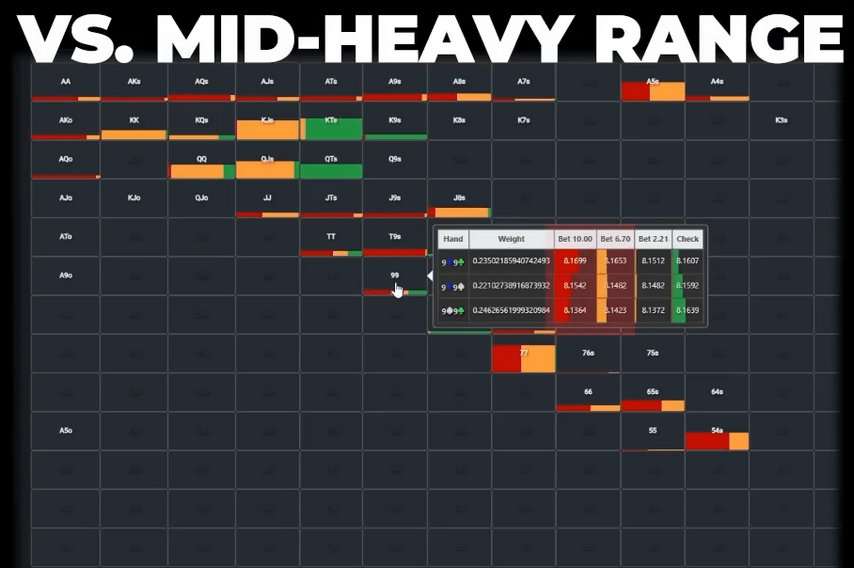
However, with optimal opponent play, the best choice is to check.
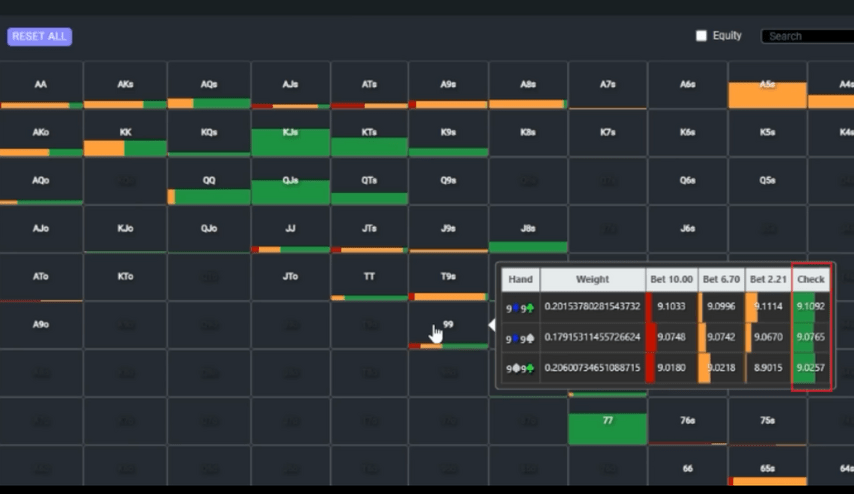
Mariano's GTO range is not as tight and contains more of both strong hands and bluffs, making it more likely to expect him to bet. If we manually add strong and weak hands to him, Mikita will have even more slowplays.
As a result, Mikita chooses the option with slowplay. It would seem, where is the logic? After all, Mariano checked twice, doesn't that mean a medium-strength hand that will happily check a third time?
No, not at all. When both players check multiple times, the relative strength of the hands is reassessed. Those hands that were close to the border of aggression, but still checked, become stronger and at some point "grow" to the bet, because each new check reduces the likelihood of strong hands from the opponent.
Let's take two pairs of Mariano. On the flop, this is a clear check with 69% equity.
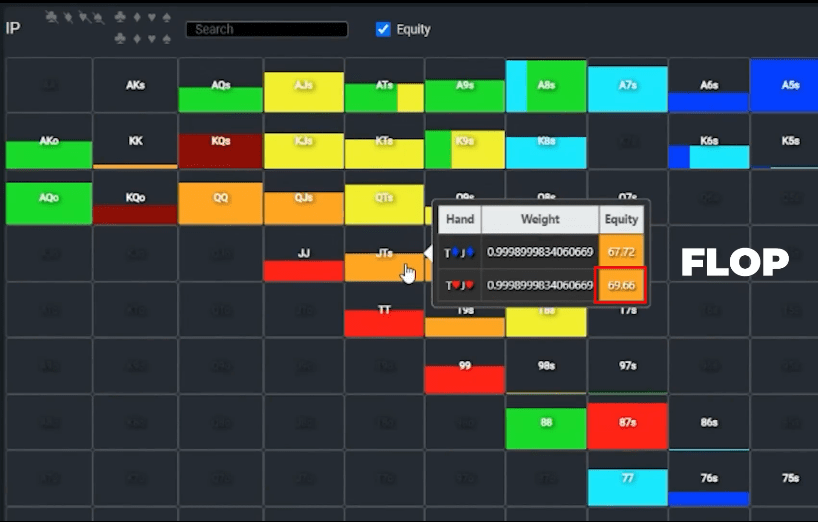
The turn is also a clean check, but the equity of the hand is already 71%. The weak equity gain is explained by the fact that the ace is a good card for Mikita's range, giving him a set and a stronger two pair.
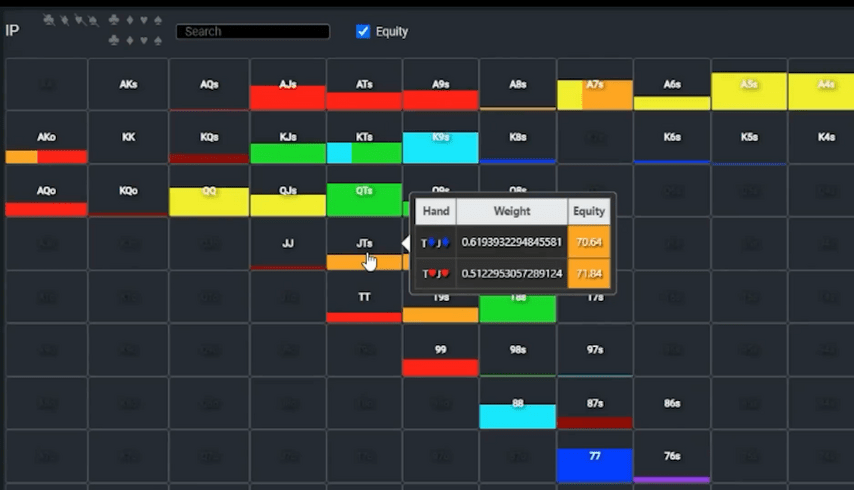
But on a blank river, the value of JTs jumps up to 92%!
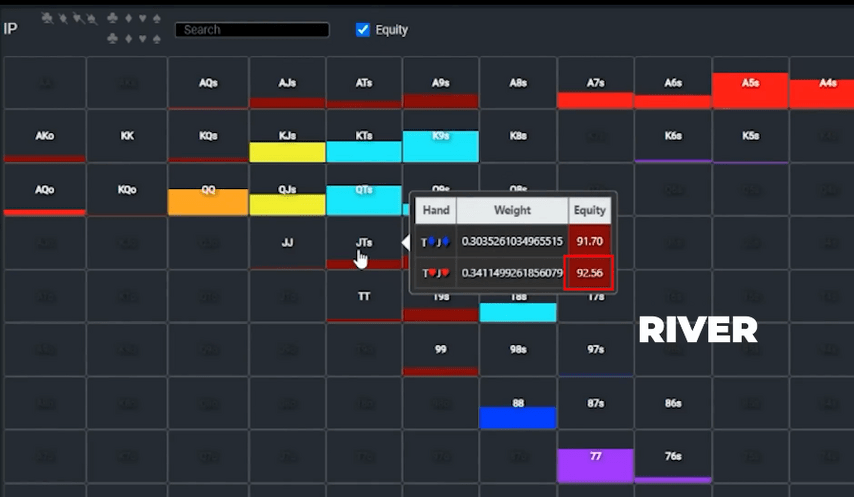
The second effect of repeated checks is that they weaken the worst of both players' average hands. After all, a check means an unwillingness to bluff and a willingness to check to showdown. If Mariano had , their equity would be around 25% on the flop, around 9% on the turn, and down to 0% equity on the river (as much as 0.01% with some suits). Zero EV hands are not interested in always checking the river in position – they want to bluff at least once in a while.
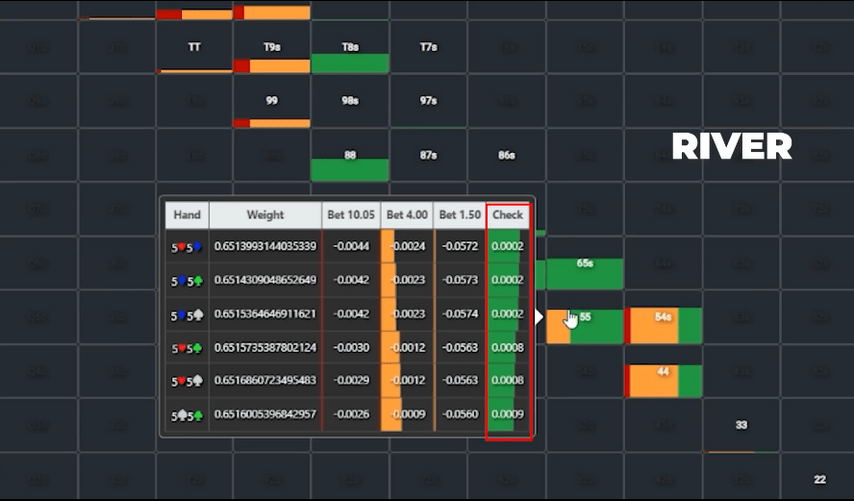
After considering the situation, Mariano makes an unusual small bet.
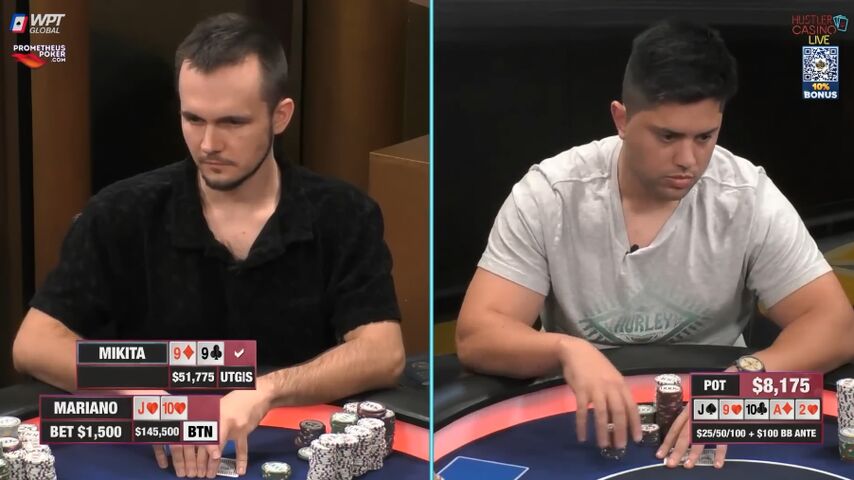
Although we all know that Mikita has a monster, to Mariano it looks like he has a weak marginal hand – something like , or . Trying to collect some value in this situation is strictly necessary. Interestingly, he chooses a very small sizing – around 20%. Yes, sometimes these sizings occur in position on the river, but only on very polar boards, for example, with four cards to a straight. In general, small bets are natural for medium-strength hands, but it's more common to check and show down in position rather than open a new betting round. A big bet with a marginal hand is no longer profitable because it doesn't get called enough by worse hands, and a small bet calibrated for strength reveals our cards and puts us in danger of a check raise. Larger sizings are usually used in position to extract more value from strong hands and to be able to bluff more widely.
Maybe Mariano's line works well against the fish coming to the Hustler stream, but Mikita is not the most typical fish.
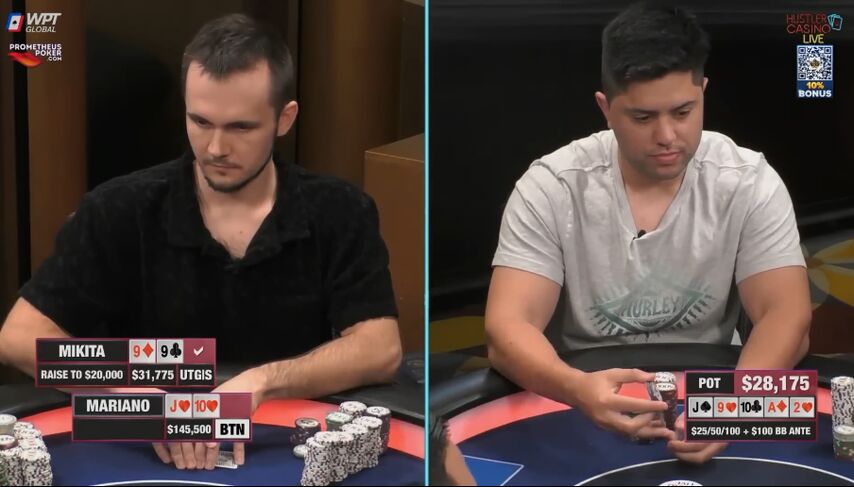
He check raises big to $20,000. Does the solver agree with him? The solver plays even more greedily – it bets all-in!
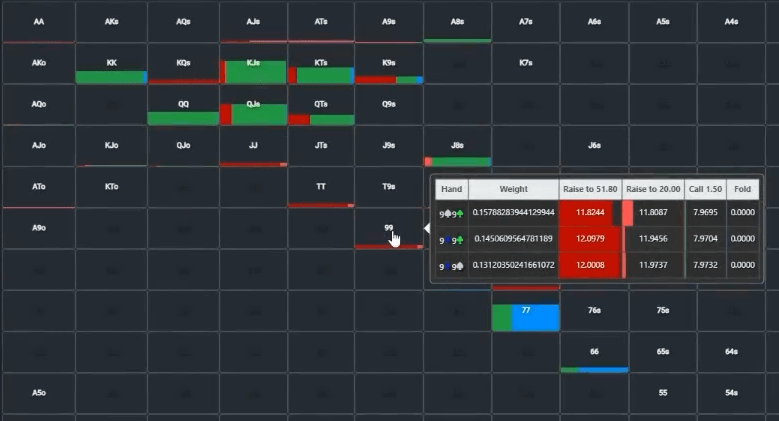
Mariano's two checks in position and a weak river bet capped his range, and the solver is looking to punish him for it.
– I would like to have here, not this rubbish,” says Mariano. What can he bluff with? , ? ? But does he have the balls for this?
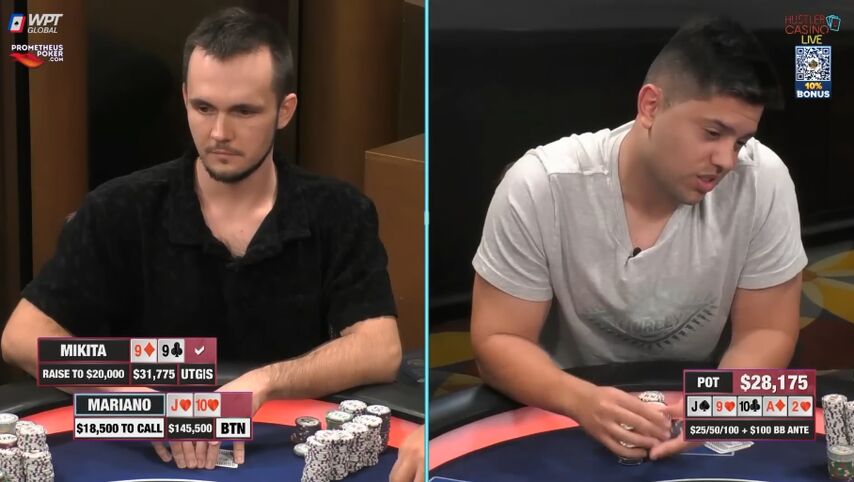
– OK. It's probably just a cooler. Call.
The solver's recommendation may surprise you: it doesn't even think about the pass...
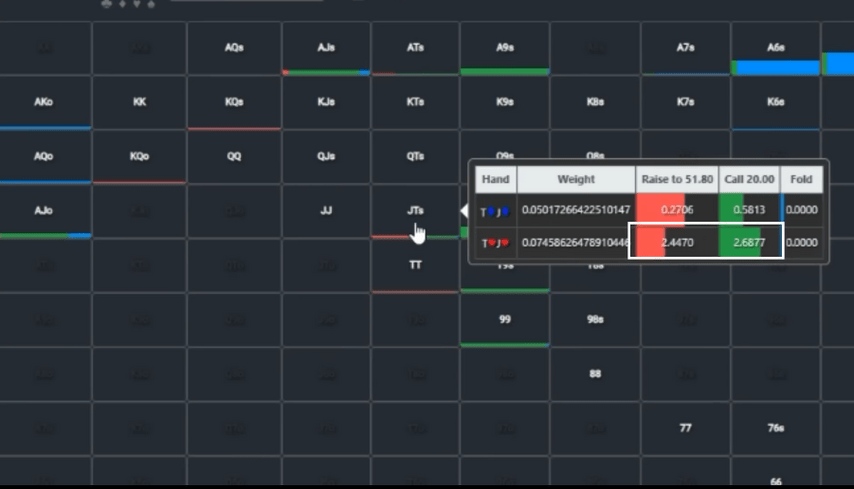
...but bets quite a lot of all-ins, knocking out the top two pair!
But with the decision would be much simpler – just pass.
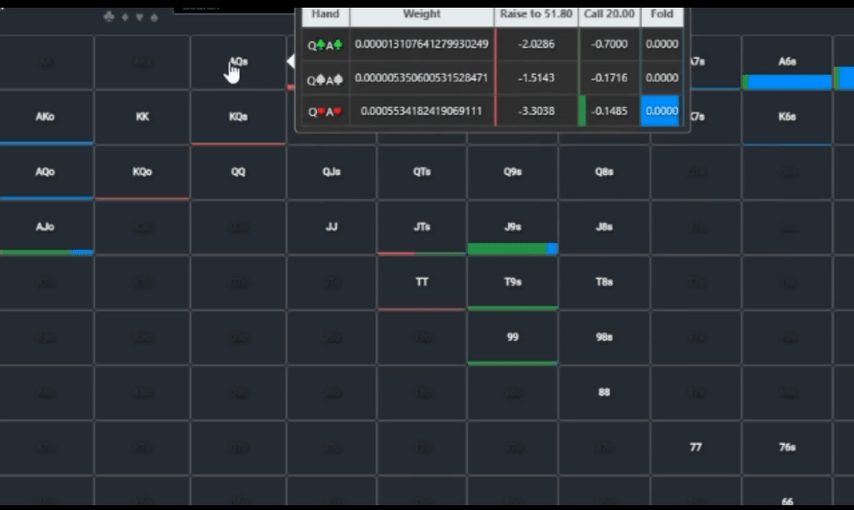
As usual, choosing the right hand to bluff catch comes down to blockers. We want to block Mikita's value and unblock his bluffs. True, in this particular case, these two intersect quite strongly, which complicates our task. Mikita's bluffs are marginal pairs that don't beat Mariano's top pair – K9s, KJs, QJs.
As far as value goes, Mariano may be mistaking that Mikita is mostly slowplaying . This would be true for lower-level players who only slowplay hands that don't need to be defended. However, top players can slowplay even more vulnerable combinations – , , , and . Therefore, having two pair blocking sets is much more profitable for Mariano than blocking a queen. And in general, in situations where bluff and value blockers overlap, try to block value first, because there are more draws on the river than bluffs.
